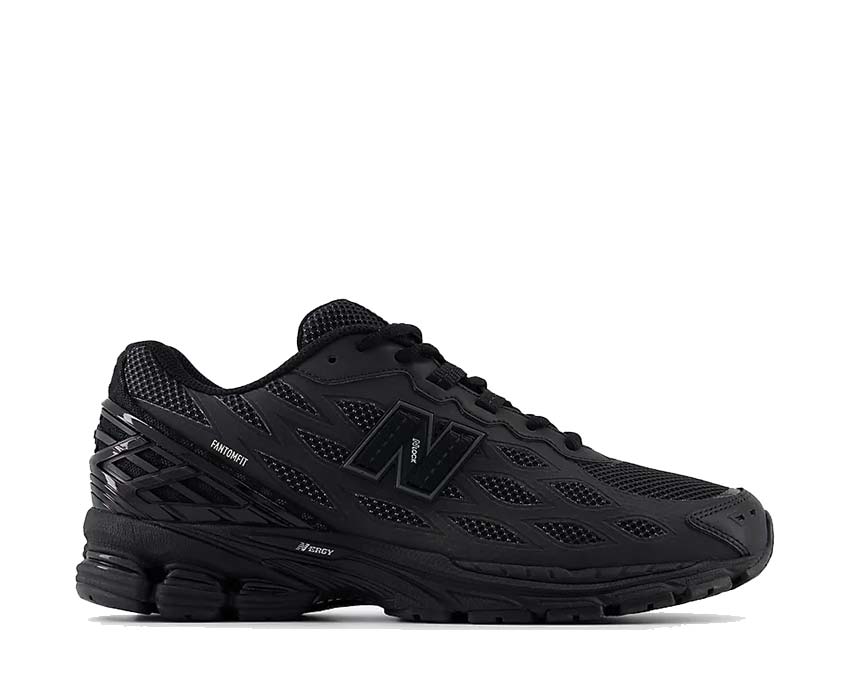In a world where sneaker design often means pushing the boundaries of color, texture, and technology, the Nike Dunk Low “Panda” took an entirely different route — simplicity. Released initially as part of Nike’s ongoing Dunk revival, the Panda Dunks became an unexpected cultural juggernaut. With their clean black-and-white colorway, these sneakers embodied the essence of versatility and effortless style. They weren’t loud, flashy, or over-engineered. They were wearable, familiar, and universal — and that’s exactly why they exploded in popularity. The Dunk silhouette, originally created for basketball in 1985, had already seen several resurgences over the decades. But when the “Panda” iteration dropped, it struck a rare chord between nostalgia and modern streetwear demand. It perfectly aligned with the minimalist aesthetic that dominated fashion circles in the late 2010s and early 2020s, blending sporty heritage with everyday wearability. The black-and-white color scheme appealed to both sneakerheads and casual consumers alike, and before long, Panda Dunks weren’t just sneakers — they were a global style statement.
The Power of Accessibility and Aesthetic Balance
Part of the Panda Dunk’s success lies in its accessibility — both in price and design. Unlike limited-edition releases that often sell out in seconds or resell for thousands, Panda Dunks were made available in continuous restocks. Nike recognized their mass appeal and leveraged it. While purists complained about “overexposure,” the consistent availability only amplified their cultural reach. For once, a sneaker that looked good, carried legacy, and matched every outfit wasn’t impossible to get. The black leather overlays contrasted against crisp white panels, achieving the perfect equilibrium — not too bold, not too basic. It became the ultimate neutral sneaker, a pair that transcended gender, age, and subculture. You’d see them on skateboarders, office workers, influencers, and even luxury stylists. The Panda Dunk became a fashion equalizer — a unifying item in a world obsessed with exclusivity. It was no longer about having the rarest shoe; it was about owning the most relatable one.
From Skateparks to Sidewalks
The roots of the Dunk lie deep within skate culture. In the late ‘90s and early 2000s, Nike SB (Skateboarding) transformed the Dunk into a canvas for creativity, collaborating with artists, brands, and athletes. But as sneaker culture evolved, so did the audience. The Panda Dunk’s appeal crossed subcultural lines. Streetwear fans embraced it for its clean aesthetic; athletes loved its comfort; influencers adored its match-with-anything vibe. Soon, the Panda Dunk wasn’t just seen in skateparks — it was spotted on city sidewalks, in fashion shows, and across social media platforms. TikTok, Instagram, and YouTube became the new runways where Panda Dunks reigned supreme. Every outfit video seemed incomplete without a pair. The shoe’s design lent itself perfectly to fashion content — crisp, monochrome, and instantly recognizable. The Panda Dunk’s cultural takeover wasn’t engineered through exclusivity but through relatability. Everyone could participate in the trend, and everyone looked good doing it.
Celebrity Endorsement and Social Media’s Influence
It’s impossible to discuss the rise of Panda Dunks without acknowledging the massive push from celebrity culture. From athletes like LeBron James to pop icons like Billie Eilish and Travis Scott, the shoe became a recurring favorite in casual street looks. Unlike most hyped sneakers, celebrities weren’t wearing them to make a statement — they wore them because they were genuinely easy to style. That authenticity resonated deeply with fans. TikTok creators, Instagram models, and YouTubers further magnified the trend. The “Panda Dunk aesthetic” videos — often featuring minimalist outfits, mirror selfies, and aesthetic street shots — flooded timelines. Every restock announcement caused a frenzy, with sneakerheads racing to secure pairs online. What’s fascinating is that this hype wasn’t orchestrated through scarcity. Instead, it was organic — a social media snowball effect built on repetition, relatability, and visibility. The more people saw Panda Dunks online, the more they became synonymous with cool, casual fashion.
The Symbolism of Simplicity in a Complex Fashion World
In many ways, the success of the Panda Dunks represents a rebellion against the chaos of modern fashion. Over the years, sneaker culture became defined by extremes — limited drops, sky-high resell prices, and eccentric designs. The Panda Dunk quietly reintroduced balance. It reminded the world that great design doesn’t need to shout. Its minimalistic aesthetic reflected a broader cultural shift toward authenticity, comfort, and sustainability. Consumers were tired of the chase for exclusivity and began to prioritize versatility. The Panda Dunk fit seamlessly into that mindset — a sneaker you could wear to the gym, the mall, or even a casual dinner. Its timeless black-and-white palette mirrored a new philosophy: less is more. This simplicity wasn’t just visual; it carried symbolic weight. It represented a return to fashion’s fundamentals — form, function, and universal appeal.
From Retail to Resale
The Panda Dunks not only reshaped style trends but also redefined sneaker economics. Nike’s decision to restock them repeatedly kept the market dynamic. At first, the sneakers sold out instantly and resold for triple their retail price. But as restocks became frequent, resale prices stabilized, democratizing access. This model blurred the line between hype and availability — something rare in sneaker culture. While some collectors dismissed them as “overplayed,” their ubiquity became a strength. For Nike, it was a masterclass in brand strategy — maintaining consistent revenue while keeping the product aspirational yet reachable. For consumers, it offered a chance to participate in sneaker culture without financial strain. Even in the resale community, the Panda Dunks became a stable commodity — always in demand, always relevant.
Styling Versatility of Panda Dunks
Another cornerstone of the Panda Dunk’s dominance is its unmatched versatility. It became the go-to sneaker for almost any outfit — from sporty streetwear fits to sleek modern minimalism. Pair them with jeans, cargo pants, shorts, or even skirts, and they instantly elevate the look. The simplicity of the black-and-white palette makes them adaptable across styles — Y2K, vintage, techwear, casual chic — you name it. Fashion influencers leveraged this adaptability, showcasing endless outfit variations featuring Panda Dunks as the base. That consistent exposure turned them into a wardrobe staple, much like white Air Force 1s or Converse Chuck Taylors. Unlike trend-specific sneakers that fade with time, the Panda Dunks’ design ensures longevity. Their appeal lies in their ability to blend in while still standing out. They’re not meant to dominate the outfit — they complete it. That’s why they’ve become the modern uniform of streetwear lovers worldwide.
A Sneaker for the People
Beyond aesthetics and hype, Panda Dunks carry emotional weight. They’ve become more than footwear — they’re a symbol of belonging. In a fashion world divided by luxury barriers and status-driven consumption, Panda Dunks offer inclusivity. They represent a shared experience across generations, backgrounds, and lifestyles. For many, their first pair of Dunks wasn’t about collecting — it was about expression. The black-and-white design resonates because it reflects balance and adaptability — qualities people admire in themselves. Whether it’s a teenager saving up for their first pair or an adult revisiting nostalgia, Panda Dunks trigger a sense of pride and confidence. They’re sneakers that connect people — from sneaker enthusiasts dissecting their design history to casual wearers posting outfit photos. They blur the line between streetwear and mainstream fashion, uniting communities under a single style language.
The Legacy and the Future of Panda Dunks
As we look toward the future, the Panda Dunk stands as a blueprint for how timeless design meets modern marketing. Its continued popularity proves that fashion’s next big thing doesn’t always have to be groundbreaking — sometimes, it just needs to be authentic. The shoe’s influence has already extended into other Nike releases, inspiring a wave of black-and-white reissues across the Dunk, Air Jordan, and Air Force lines. Even competing brands have mirrored the formula — creating clean, monochrome sneakers that echo the Panda aesthetic. The lasting legacy of the Panda Dunks is not just in their style but in their philosophy. They’ve taught the fashion world that accessibility and aspiration can coexist, that hype can be inclusive, and that simplicity can become iconic.
Conclusion
Ultimately, the story of the Panda Dunk is a story about balance — in color, culture, and consumer desire. It bridges the gap between old-school sneaker heritage and modern-day fashion accessibility. It proves that sometimes, the most powerful statement is the simplest one. From TikTok feeds to city streets, from luxury boutiques to skate shops, Panda Dunks have achieved something few sneakers ever have: ubiquity without fatigue. They’ve become the heartbeat of contemporary streetwear — a canvas of self-expression and a testament to timeless design. As trends evolve and new silhouettes emerge, the Panda Dunk will likely remain a staple — not because it’s rare, but because it’s real. It’s a sneaker that represents today’s generation — confident, connected, and effortlessly cool. The Panda Dunk isn’t just a shoe; it’s a movement, an icon, and a lasting reminder that fashion’s greatest power lies in simplicity.





